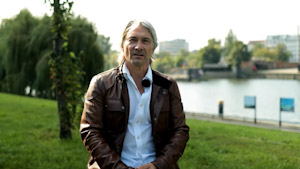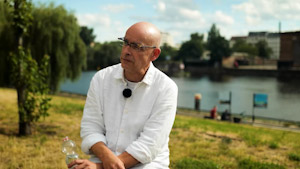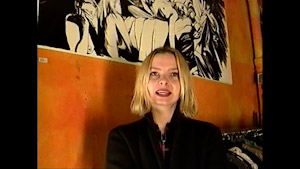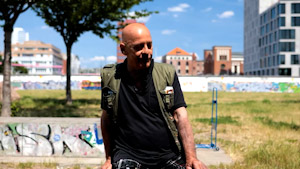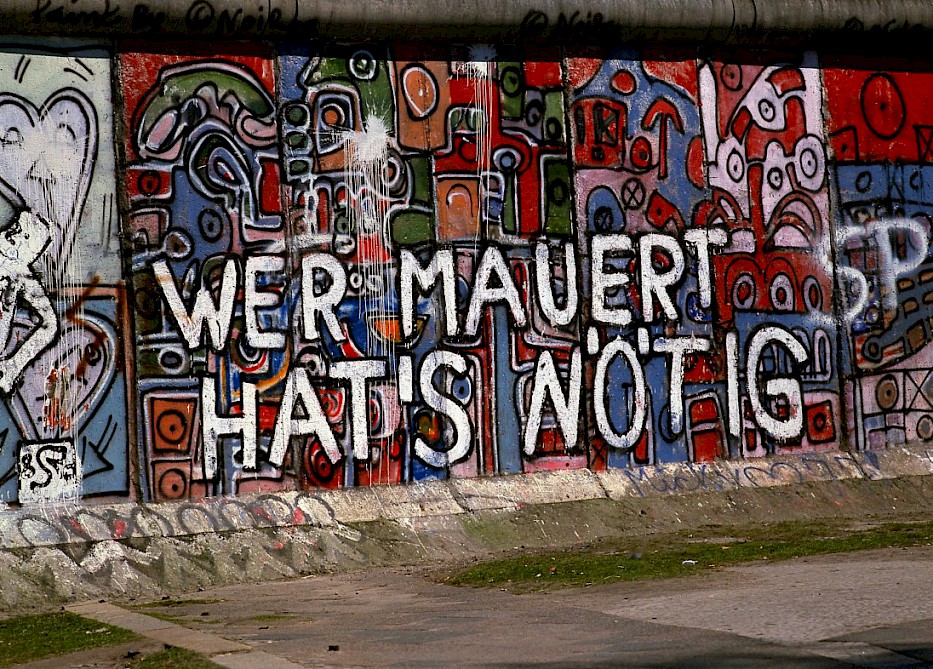
“I wanted to enclose East Berlin with art and make a quasi-museum out of it.”
The Nascence of Wall Art in West Berlin
People in West Berlin began writing on the Berlin Wall soon after the first border barriers were erected in August 1961. They wrote slogans expressing their anger over the Wall’s construction and the city’s division. They also commented on incidents in East Berlin, for example when someone was shot during an escape attempt. Later, these protest statements about the Wall were joined by slogans from the peace movement and other groups.
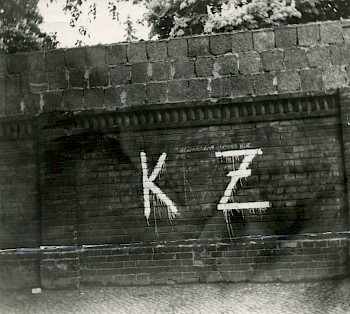
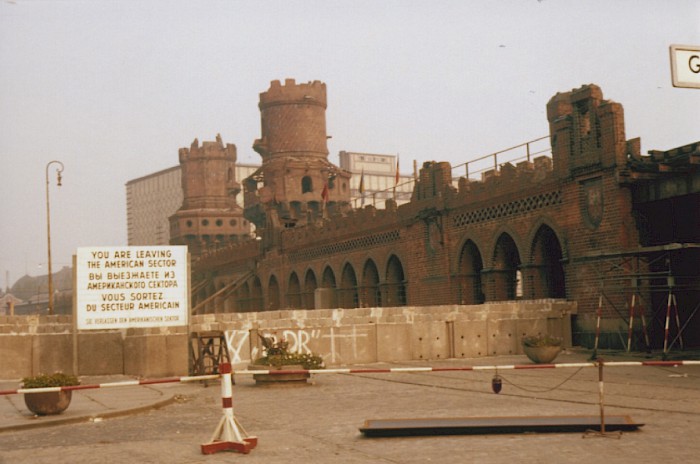
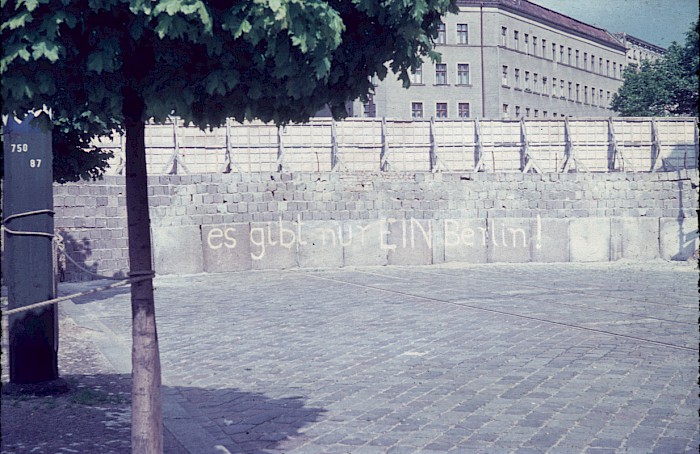
The 1980s
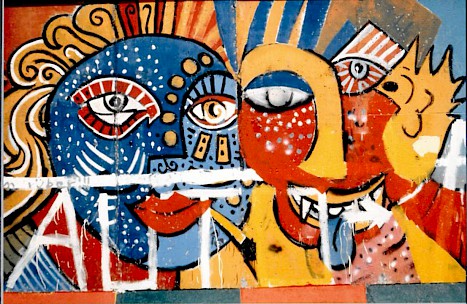
Over time, the comments written on the Berlin Wall became more diverse. In the mid-1970s, the GDR government erected the "Border Wall 75," a structure consisting of smooth, 3.6-meter-high elements primed white. This ideal painting surface ushered in the popular era of Wall art in West Berlin. Two Frenchmen, Thierry Noir and Christophe Bouchet, discovered the new Wall in Kreuzberg in the early 1980s and began embellishing it with hastily painted, large-scale, colorful images. Their intention was to add color to the Wall’s oppressive gray. Kiddy Citny, Indiano and Jonathan Borofsky also painted several sections of the Wall, livening up many of the streets in Kreuzberg. In the mid-1980s, graffiti artists, inspired by New York subway graffiti, began writing on the Berlin Wall. For young people, the Wall was a way to make themselves noticed at a major Berlin site. They used graffiti, political slogans and other texts to assert their presence in the city.
Because the Wall stood on GDR territory, painting it was not without risk. GDR border guards sometimes stepped through small doors in the Wall to carry out repairs in front of the Wall on the West side of Berlin. They would also photograph the pictures on the Wall. In the beginning, they painted over the images they documented, but later they left them alone. In some cases, GDR border guards opened the doors, dragged the young people painting the Wall into East Berlin and arrested them.
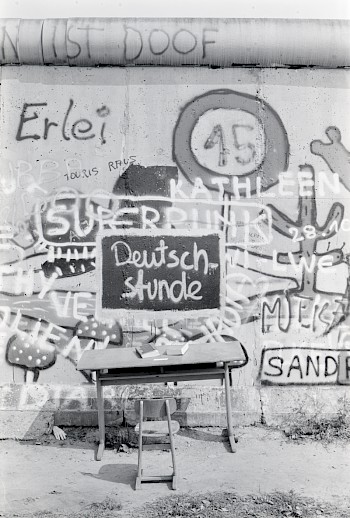
“The people who lived there thought it was great: ‘This ugly thing is finally getting some color and you’re painting nice pictures on it.’ […] Over time, tourist busses began visiting too, and it was seen as the new art form of West Berlin.”
Wall Art as a Symbol and a Moneymaker
Wall art fundamentally changed how the Berlin Wall was viewed. Through its colorful images, it became a symbol of West Berlin's artistic and social freedom and its diversity. Wall art and graffiti became West Berlin’s trademark worldwide. It also distracted from the Wall's brutality, which led some critics to complain that the art trivialized the Wall.
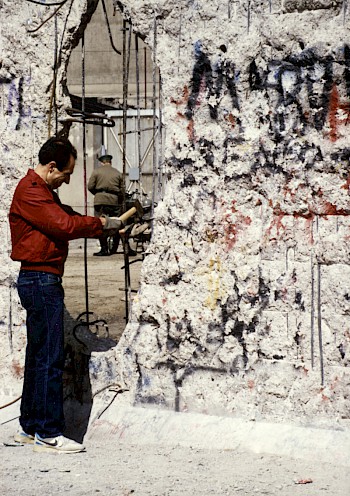
After the Wall opened on 9 November 1989, this former symbol of Berlin became a demolition site for souvenirs. Private and professional “wall peckers” broke off pieces of the Wall to keep for themselves or sell as souvenirs. Companies from around the world also started marketing pieces of the Wall and the bankrupt GDR profited from the sales. By mid-April 1990, the SED government had already generated about 900,000 German marks (ca. 2,700,000 GDR marks at the time) by selling Wall segments through the foreign trade company Limex. Two months later, the largest auction of Wall segments was held in Monaco. Large pieces of the Wall with murals by Thierry Noir and Kiddy Citny were sold without the artists' consent. Later, they both successfully sued for a share of the profits. On 13 June 1990, the city began dismantling and disposing of the entire border wall and recycling it as building material. Segments of the Wall with pictures by famous artists also found their way into private collections. Others were donated to museums, memorials, libraries and German state offices. Today, Wall segments commemorating the Cold War’s peaceful end can be found all around the world.
Contemporary witnesses remember
Additional information:
On selling the Berlin Wall: https://www.berliner-mauer-weltweit.eu/sachtexte/beton-zu-geld/
The Berlin Wall in the world – an interactive map: http://www.berliner-mauer-weltweit.eu
Wall paintings in East Berlin
